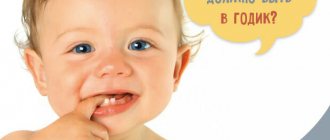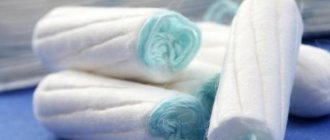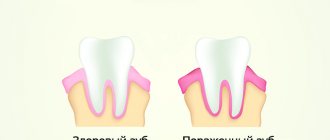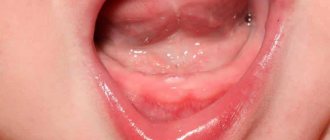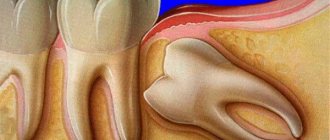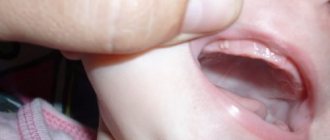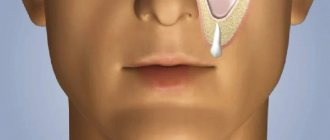Why are children most often born without teeth?
Hippocrates was the first to call a child’s milk teeth.
This name was due to the fact that they appear during breastfeeding, and the main food for babies is mother's milk. The latter contains calcium, which is undoubtedly necessary during the formation of units. The formation of dental follicles occurs from the fifth week of the mother’s pregnancy, and by the end of the tenth the formation of the buds is completed. According to generally accepted standards, the process of teething begins at 5-7 months of a toddler’s life, but this can happen either later or earlier. It is extremely rare that babies are born with teeth, or they appear in the first month of their life - such cases are unique. Such teeth are called natal and neonatal and are divided into two types - complete and spare. In this case, the latter should be replaced by milk ones and they are recommended to be removed.
Is it worth asking about the number of guys?
Before asking how many men a girl has had before you, think carefully. First of all, the answer may be very disappointing. Secondly, you should not be interested in this topic if you are not ready to answer a similar question yourself. Hi, friend! Especially for you, I have prepared a course “Schoolboy. Basics of Pickup" for only 490 rubles! Follow the link and order —> Does such a question make sense in principle? If you have a good, serious relationship full of feelings with a girl, then what difference does it make how many men she had before you? Believe me, if she has very few exes, even this can be very upsetting. Any guy expects the answer: “you’re my first,” or second at most.
Regarding the opposite question from the lady, be prepared to admit the number of sexual partners you have. The girl may also be offended by your answer, which will affect the positive development of the relationship.
There is also such a thing as double standards among guys. Most want the chosen one to be a virgin, or at least to have no more than three sexual partners.
At the same time, guys don’t think about themselves, sometimes having dozens of women behind them. Is it fair to judge a girl poorly with such baggage?
Anomalies in childhood
Unfortunately, not all children grow and develop their jaws smoothly. In orthodontic practice, there are a wide variety of anomalies associated with the size, shape, number of incisors and molars, as well as the position of the jaws relative to each other - the bite. The following factors may be prerequisites for incorrect formation:
- bad genetics
- disruptions during intrauterine development, infections in the mother during pregnancy, fetal injuries,
- problems in the functioning of the endocrine system, disorders in the functioning of the thyroid gland,
- bad habits, for example, sucking your thumb in your sleep,
- deficiency of vitamins and vital minerals in the body,
- poor diet, predominance of junk food,
- low quality of oral hygiene.
The table below shows the most common types of anomalies, as well as their most common forms.
| Type of defect | Main forms of pathologies |
| Crown size | Micro- and macrodentia - abnormally small and large crowns, respectively (the defect can affect one, several teeth or the entire jaw) |
| Number of teeth | Primary partial and complete edentia - the absence of several or all elements, respectively. Hyperdentia - an abnormally large number of units, which often grow second row |
| Shape Features | Hutchinson's and Pflueger's teeth have a cone-shaped, sometimes pointed shape |
| Structure of enamel and dentin | Hypoplasia and hyperplasia - spots, grooves, tubercles on the enamel, disturbances in its structure and color |
| Enamel shade | Pigmentation of enamel, when it becomes unnaturally yellow, gray or even black |
| Bite (occlusion) | All types of malocclusions, including mesial, prognathic, cross, open, deep and other types of occlusion disorders |
Vitamin K
Necessary for complete absorption of calcium and protein synthesis. Found only in natural dairy products (cottage cheese, sour cream and others).
Teething for young parents seems like an extremely difficult and nervous process. They prepare for it mentally, they are afraid of hysterics and hyperthermia.
Young and inexperienced parents do not need to worry or be negative. It is better to study the issue of dentition in infancy in order to arm yourself with knowledge and understand why the baby cries and is nervous. In this case, jaw development will be perceived as a normal physiological stage of growth, which will be experienced easily and quickly.
Parents' actions after tooth loss
Before falling out, the baby tooth is loose, so its loss usually does not bother the child (for more details, see the article: table with the timing of teething in children). Parents should be prepared for such a moment and do the following in the event of a loss:
- a sterile swab should be applied to the wound that formed at the site of the lost tooth to stop the bleeding,
- you should not feed the baby for 2 hours after the loss,
- within 2-3 days, the child’s food should be warm and uniform in consistency, without solid particles,
- After each meal you should rinse your mouth,
- the plug of clotted blood that forms at the site of the wound cannot be removed, it will come out on its own,
- the hole should not be treated with antiseptics, especially hydrogen peroxide,
- the child should be explained that the wound should not be touched with fingers,
- If the temperature rises after the loss, you should immediately consult a doctor.
What factors influence this process?
It is almost impossible to say unambiguously how many milk units a baby will have by 9, 10, 11, 12 or 18 months. All children develop individually. Development is influenced by climate features and the process of intrauterine formation.
We suggest you familiarize yourself with Numb face after a blow
The following factors are of greatest importance for the proper development of a child’s bite:
- Mother's illnesses. If the mother has chronic pathologies of the cardiovascular system, dental and other diseases of organs and systems, the development of the fetus during pregnancy may not proceed correctly. In addition, the process of embryonic formation is disrupted when a pregnant woman suffers severe viral infections. Diseases such as herpes, toxoplasmosis, influenza, and rubella have a particularly negative impact on the health of children.
- Complications of pregnancy. Sometimes mother and baby experience blood protein incompatibility. Rhesus conflict can negatively affect the health of the unborn child. Severe forms of toxicosis also cause abnormalities in fetal development.
- Prematurity. When born prematurely, the child's immune system and other organs do not reach the required level of maturity, which affects the overall health of the newborn and his subsequent development.
- Mother's diet during pregnancy. In the first trimester of pregnancy, the formation of dental buds occurs. For the normal course of this process, a woman needs to include in her diet dishes with a high content of calcium and other minerals.
- Newborn injuries. If the baby is injured during the birth process, in the future this may affect its development, including the formation of teeth.
- Infections. Early infections of viral or bacterial etiology can slow down the eruption of temporary units of dental occlusion.
- Pathologies of internal organs. Diseases of the thyroid gland and pituitary gland affect the formation of teeth in childhood.
- Heredity. If there have been cases of late appearance of the first teeth in the baby’s family, there is a possibility of a repetition of the situation.
- Climatic conditions. In regions with warm weather conditions, teething usually occurs faster than in babies born in cold climates.
How to make teething easier at 1 year old?
During the period when teeth appear, it is important not to count their number, but to alleviate childhood suffering. Babies can be calmed in the following ways.
- Breastfeed more often or carry in your arms so that the mother’s calmness is transmitted to the child.
- Give chewable rubber teething toys. Some children prefer their mother's bent finger, so their hands should be clean.
- Lubricate your gums with a special gel with an anesthetic effect. For example, the drug “Kamistad” or “Kalgel” is applied with a small drop in a circular motion.
- Massage your gums often. This relieves the itching sensation.
- Do not put cold toys or objects in your mouth. In some cases, this does not relieve pain, but increases it.
Remember: the gums will itch, the child will pull at everything in order to relieve the condition. So keep an eye on two things:
- To prevent the baby from bringing dirt into his mouth.
- So that he does not injure his gums with sharp and hard objects (even crackers).
During this period, children can often catch stomatitis (whitish spots on the lips, tongue, palate), which can also be accompanied by high fever.
Recommendations:
- Prepare teethers in the form of toys. The most popular are food-grade silicone, as well as items filled with water that need to be pre-cooled.
- Take care of the baby's environmental hygiene. Because he puts everything in his mouth, and his gums are inflamed, there is a risk of infection.
- Gum massage can be done using your fingers or wet gauze.
- Give older children cookies or fruit more often.
- Special gels (Kalgel, Kamistad, Doctorbaby) give a short-term effect. You need to smear them not according to schedule, but when it hurts. Consult your physician before purchasing. Also, there are painkillers specifically for children (Dentokind).
- Apply to the chest more often, provide attention, play and distract.
- Ventilate the room more often for the overall well-being of the child.
- As an antipyretic, paracetamol is allowed for young children.
Reasons to call a doctor:
- increased body temperature over 39 degrees;
- loose stools more than 6 times with abnormal green or bloody stools;
- frequent vomiting;
- yellow or green runny nose;
- continuous tearful state;
- hematomas on the gums;
Norms and sequence of eruption of baby teeth
There is a genetic predisposition to early or late dental growth. When it is known that one of the parents’ milk supply began to form late, the likelihood of late eruption in the baby increases. In this case, the remaining teeth will also appear late in the order of priority.
WHO specialists have developed a diagram showing the order of appearance of each group of dairy units. The timing of their growth may shift slightly, but the order, as a rule, remains the same. The table below contains detailed information about the timing of the appearance of teeth, the sequence of their growth and the number of units of this group.
| Baby's age (months) | Number of teeth by age | Group of dental units and their number |
| 6-7 | 2 | Central incisors (lower) 2 |
| 8-9 | 4 | Central incisors (upper) 2 |
| 9-11 | 6 | Lateral incisors from above 2 |
| 11-13 | 8 | Lateral incisors from below 2 |
| 13-15 | 12 | Molars (2 each on top and bottom) |
| 18-20 | 16 | Fangs (2 on both jaws) |
| 20-30 | 20 | 2 second molars on the upper and lower jaws |
After studying the table, parents will be able to understand that by the end of the first year, children may already have 8 teeth coming out in their mouths. They all belong to one group - incisors.
Video
The famous doctor talks about the teething of baby teeth and the actions of parents in the video below. Taken from the official channel “Doctor Komarovsky”.
Do you have any questions? Specialists and readers of the KROHABABY website will help you ask a question
Was this article helpful?
Thank you for your opinion!
The article was useful. Please share the information with your friends.
Yes (100.00%)
No
X
Please write what is wrong and leave recommendations on the article
Cancel reply
Rate the benefit of the article: Rate the author ( 1 vote(s), average: 5.00 out of 5)
Discuss the article:
Order of eruption and number of molars
The first molars (permanent) teeth begin to grow in a child at the age of 6-7 years and they appear not in the place of fallen milk teeth, as many believe, but in the free space of the gums. These are chewing teeth that erupt in pairs above and below, and they are called first molars.
Simultaneously with the appearance of the first molars, the process of replacing baby teeth with permanent ones begins. Molars, in the process of their growth, destroy the roots of baby teeth, which is why the latter become loose and fall out over time. The loss of baby teeth occurs in the same sequence in which these teeth erupted.
We suggest you read: What is dangerous about a cyst on a tooth and how to cure it?
The procedure for changing baby teeth to molars:
- at the age of 6-7 years, the child’s lower and upper central incisors fall out, and permanent teeth erupt in their place, with the lower central incisors appearing at 6-7 years, and the upper ones at 7-8 years;
- at the age of 7-8 years, the upper and lower lateral incisors fall out, the lower molar lateral incisors erupt at 7-8 years, and the upper ones at 8-9 years;
- at the age of 9-11 years, the lower and upper first molars fall out, in their place the first upper premolars erupt at 10-11 years, and the first lower premolars at 10-12 years;
- at the age of 10-12 years, the lower and upper second molars fall out, in their place the second upper premolars appear at 10-12 years, and the second lower premolars at 11-12 years.
This is where the replacement of baby teeth with molars ends; the number of teeth in children 10-12 years old is 24. But the growth of permanent teeth does not stop there, it continues. And in the period from 11 to 13 years, the child develops second lower molars, and at 12-13 years old, second upper molars. The last teeth to erupt are the lower and upper third molars, usually in adulthood, between 17 and 20 years of age. There are cases when these teeth do not appear at all, so the normal number of teeth in an adult is considered to be 28-32 teeth.
I hope in this article you found the answer to the question of how many teeth children have, depending on their age, and in what order they erupt. The main thing I want to pay attention to is that parents should take their child to see a pediatric dentist at least once a year. Since only a qualified specialist will be able to assess whether the child’s teeth are emerging correctly, what is the condition of the new teeth, and whether there is a need for a doctor’s intervention in this process.
Norms for the number of teeth before and after one year
The first milk teeth normally appear in newborns up to one year old - at 6 or 8 months, with rare exceptions at 3-4 or closer to 12. The order of their appearance in the mouth is usually the same for all babies, but the timing is determined by nature.
According to the average pattern for all babies, the incisors appear in the following sequence up to one year:
- at 6–10 months - two lower central teeth;
- at 8–12 months - two upper central incisors;
- Between 9 and 16 months, the upper and lower lateral teeth emerge sequentially.
Thus, by one year the baby becomes the proud owner of eight incisors. Although the normal number of baby teeth in a 1-year-old child is not established on a single scale.
After the first birthday, teeth grow more actively. The cutting table looks like this:
- by 13–19 months - molars from above;
- by 14–18 - molars from below;
- by 2 years - upper and lower canines;
- at 2.5–3 years - the second set of molars above and below.
A full-fledged jaw from baby teeth will be formed by 30 months, the child will have twenty teeth in his mouth.
They will change to native ones closer to first grade.
Parents do not need to remember the rules. There is an interesting formula for counting teeth by baby's age. There should be four less than the months of the baby’s life.
For example, a girl is 10 months old, subtract 4 from her age and get the result: after 10 months there should be 6 teeth in her mouth. Do not forget that the figure will be average, and the amount in a certain period depends on the individual characteristics of the newborn’s development and heredity.
How many teeth does your child have at 1 year old?
- Over 6 46%, 711 votes
711 votes 46%711 votes - 46% of all votes
- From 4 to 6 27%, 419 votes
419 votes 27%
419 votes - 27% of all votes
- From 2 to 4 16%, 245 votes
245 votes 16%
245 votes - 16% of all votes
- From 1 to 2 9%, 141 votes
141 votes 9%
141 votes - 9% of all votes
- Not at all 2%, 24 votes
24 votes 2%
24 votes - 2% of all votes
Total votes: 1540
14.08.2018
×
You or from your IP have already voted.
The order of eruption and the number of baby teeth in children
Typically, baby teeth begin to erupt at 6 months of age. But exceptions to the general rule are possible: it happens that the first tooth erupts at 4 or 10 months - this is due to genetic predisposition. That is, if the child’s father or mother’s first tooth erupted at 9-10 months, then there is a high probability that their child’s teeth will begin to appear at this age. In such cases, the teething schedule shifts: if the first teeth appeared “late,” then all the others will erupt later.
Let's look at a diagram that shows the number of teeth in children by year and the order in which they erupt. It is worth noting that the diagram shows the average time for the appearance of baby teeth, approved in accordance with the recommendations of the World Health Organization, but the order of teething is always the same.
Number of teeth in children under one year of age:
- at the age of 6-7 months, the baby appears two lower teeth - central incisors;
- at the age of 8-9 months, two upper teeth - central incisors - erupt;
- at the age of 9-11 months, two upper lateral teeth appear - incisors;
- at the age of 11-13 months, two lower lateral teeth - incisors - erupt.
In total, by the end of the first year of life, the baby should have 8 teeth.
Number of teeth in children over one year of age:
- at the age of 12-15 months, the child appears two upper and two lower teeth - first molars;
- at the age of 18-20 months, two upper and two lower teeth - canines - erupt;
- at the age of 20-30 months, two upper and two lower teeth appear - second molars.
Usually, by the age of two and a half, the number of baby teeth in children is 20. And this number will remain until they are 6-7 years old, until the replacement of baby teeth with molars begins.
There is also a formula that can be used to calculate how many baby teeth a baby should have at a given period of life. It will be very easy for parents to remember: they need to subtract 4 from the number of months the child has lived - the resulting value is equal to the number of teeth that should be present at that age.
Although it has already been said that the number of teeth in children under one year of age may differ from the average norm, and this is due to hereditary predisposition, I would like to note that the late appearance of baby teeth is a symptom of a disease such as rickets. Therefore, if the first teeth have not erupted after 7 months, it is worth showing the baby to a pediatric dentist and pediatrician.
We suggest you familiarize yourself with Pimple inside the lip: why it appears and how to treat it
Delayed teething
Once again, you should focus the attention of mothers on the fact that there is no schedule for your baby’s teeth; not a single dentist can say with certainty when your child will get his first tooth, and how things will go further. You should be patient and strong. Previously, it was believed that a delay in the appearance of baby teeth was a sign of rickets. But current medical experts have completely refuted this assumption.
After all, many completely healthy children do not have a single tooth even at 1 year of age, but by the age of two they have the entire “required set of teeth” available. Do not leave any questions or concerns about this unattended; be sure to consult your doctor or dentist; it is better to be extra vigilant than to overlook it. You may need to undergo tests to help identify the reasons for the delay in the appearance of teeth in your child.
An X-ray will show the exact condition of the gums and the presence of tooth germs, or examination using a radiovisiograph. It is possible that your anxious feelings about the absence of your first teeth will not be in vain. There are a number of factors due to which teeth do not erupt on time:
- Problems in the baby's intestines;
- Presence of infectious diseases;
- Metabolism is disrupted;
- Lack of vitamin D;
- Adentia (congenital absence of tooth buds);
- Perhaps the tooth is located horizontally in the gum.
It is possible that there is a deviation in the process of teething, indicating the presence of pathology in this process. Among other things, the reasons for this phenomenon may include:
- Mothers who have suffered from illness during pregnancy;
- Endocrine system disorder in a child;
- Incorrectly formed tooth in color, size, shape;
- Metabolic disorders, rickets, infection in the baby’s body;
- Wrong place for baby teething.
Also, the reasons for finding fewer teeth in a child per year may be due to the genetic characteristics of the child, his heredity.
Symptoms of the appearance of the first teeth
It is natural that the mother constantly examines the baby’s oral cavity and feels any changes in it when breastfeeding the baby. That is why the following symptoms can be observed:
- Inflamed and reddened gums (in the form of swelling, as if swelling);
- The child's cheeks may burn;
- A visible whitening bubble, as a rule, is the first tooth.
In order for the first tooth to erupt, it also needs to go through a difficult path - cutting through the bone tissue, then through the mucous membrane of the gum itself. There is no need to panic, because this is the same natural process as the baby learning to roll over onto his tummy, learning to hold his head up, and crawling.
You may see the appearance of a desire, unusual for a baby before this period, to pull all objects into his mouth and scratch his gums with them, he may begin to actively pull himself by the ears, rub his cheeks. You should monitor the child’s temperature; it can reach 38.5 degrees; if this is the result of teething, then it will not last longer than two days.
In addition, you can forget about your baby’s sound daytime and night sleep for a certain time. Many mothers try not to ignore such symptoms and always consult a pediatrician. At the same time, even the season of the year affects the very fact of the appearance of teeth; summer is a cause of particular concern for elevated temperature, indigestion, and other things, this should also be taken into account.
Symptoms indicating the imminent appearance of baby teeth
Main symptoms:
- Redness and swollen gums.
- Heavy salivation.
- Increased excitability.
- Intestinal disorders.
- Fever, runny nose, cough.
- The child aggressively chews toys or bites the breast during feeding.
Some signs can be confused with an incipient viral or other disease, so you need to pay attention to all the symptoms and see a pediatrician if in doubt.
Baby oral care
The need to take care of the oral cavity appears from the moment the child’s first teeth come out. Sufficient attention to oral hygiene will help prevent the development of many dental pathologies.
Prevention of dental diseases includes:
- Daily brushing of teeth. Until the age of one, experts recommend using a silicone toothbrush to clean the entire oral cavity. Parents should brush the teeth of a child under 4 years old, and children from four to eight years old should do the procedure independently under adult supervision.
- Rinsing your mouth after eating.
- Compliance with diet. The child's diet should include foods containing calcium, fluoride and other microelements. Until the age of one and a half years, it is undesirable for a child to consume chocolate or confectionery sweets, and snacks between meals are also undesirable.
Regardless of how many teeth your baby has lost by 8, 9, or 12 months, at the age of one year you should take him to a dentist for an oral examination.
What is important about knowing the number of sexual partners?
It's safe to say that guys usually ask the question out of simple selfishness and jealousy. They want to know that they are the first, the only, the best in bed and the like. The fear of being inexperienced in sex plays a cruel joke on your girlfriend: many are afraid to such an extent that, having heard that they are already the fifth or tenth, they simply leave the lady. Men are simply hoping to reassure themselves, but instead they may start to worry even more.
In addition to selfish interest, it is useful to know how many men the girl has had and what kind of relationships they were (long-term relationships or short romance) in order to determine the likelihood of contracting diseases.
After all, if a lady had a lot of sex, then it is quite possible that she “caught” a sexually transmitted infection. After all, no one forces their lovers to get tested before their first sex, which means there is a risk.
According to research results, among people who had 5-9 sexual partners, 8% were diagnosed with sexually transmitted infections.
Fluorine
Strengthens enamel, makes incisors resistant to bacteria, the destructive effects of acids, and prevents caries. Fluoride is taken in tablets or drops when a deficiency is diagnosed. Enters the body with sea fish, nuts, grape juice, spinach, and most vegetables.
Toothpastes with fluoride are not approved for use by children under 4–5 years of age. Children aged 1.5–3 years swallow the tasty mass when cleaning their mouths, and an excess of the element is formed in the blood. For foolish children, choose toothpastes without fluoride to protect them from the negative consequences of hygiene procedures.
